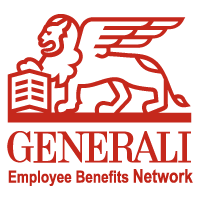Three ways to balance local employee wellbeing needs with overarching global policies

Ultimately, local market practice and cultural standards will define what the product and the health and wellbeing initiative will look like. But there are a number of ways in which those local practices and standards can be accurately determined, while, at the same time, ensuring global oversight.
1. Multinational pooling
One of the most effective ways to overcome the global-local conundrum is through multinational pooling. Pooling offers multinational companies the opportunity to achieve a level of central control and governance over their local employee benefits.
One of the major benefits of multinational pooling is the potential for companies to receive money back in the form of an annual dividend, if there’s a positive result for the pool.
Although there are clear financial efficiencies to be gained, pools have other advantages. They are a source of information and expertise, allowing a company to access rewards and benefits information from each of its subsidiaries so it understands what is and isn’t working. Pools also enable firms to manage and coordinate employee benefits on an international scale.
Joining a pool gives a company a single point of contact with a network of global insurer partners, which in turn allows it to access local products and services as well as the latest country and regulatory information.
With the increasing importance of workplace health and wellbeing data, pools also allow firms to more easily access and analyse claims patterns, enabling HR to look at health trends and pressure points around the globe. This can help with the provision of enhanced and more personalised rewards and benefits that will encourage the best results in terms of recruitment, retention and productivity.
2. Data and technology
Technology-based solutions are revolutionising reporting capabilities, allowing central HQ to understand the wellbeing needs and trends of its local subsidiaries. One way this can be achieved is through a global medical dashboard, available as part of a global employee benefits programme such as pooling or reinsurance to captive. Experience shows us that this level of sophistication is mainly utilised by captive insurers.
First, let’s take a step back and explain what a captive is.
A leap on from multinational pooling, we have captive reinsurance. In its simplest terms, a captive is your very own reinsurance company – set up by your business to handle your risk and your risk alone: form property and casualty (P&C) to employee benefits (life, accident, disability, medical and pension). A Network helps you manage and administer the captive, bringing together a collaboration of independent insurer partners from around the world. Through association with the Network, the captive is also afforded financial strength and security.
Employers that place their medical plans into a captive should also gain access to a global medical dashboard, which effectively allows them to make a real impact on employee health. The best dashboards will allow for the overlaying of claims data with observations and insights on local population health trends, programme design, provider network structure and any impact on plan costs from the public health sector and the regulatory environment. An understanding of all of these factors is essential to help convert data into meaningful solutions for employers and those insured.
Technological advancements are also improving the ability to communicate with employees globally, enabling more personalisation and helping prevent or mitigate issues before they get worse.
More companies are implementing technology-based whole of workforce solutions, with digital platforms and central information hubs providing employees with better access to benefits. Artificial intelligence is also increasingly playing a role in improving communication and personalisation, with benefits chatbots, for example, now able to communicate the most relevant content and advice for individual employees around the globe.
3. A shared vision
Companies face many challenges when designing, delivering and evaluating an international wellbeing strategy. However, the evidence shows that when it’s done well the results in terms of cost savings, improved employee physical and mental health, increased productivity and the retention and recruitment of top talent are considerable.
One of the key factors in getting it right is being able to establish and communicate a shared global vision that emphasises the company’s health and wellbeing aims as well as the financial business case. Time and effort should be spent on creating a cohesive story, with the reasons, goals and benefits of providing the wellbeing strategy consistently communicated and aligned with the reality of the company’s culture and employee experience.
Although metrics should be globally consistent, there must be local relevance in terms of the measurement of success. This means both the C-suite in central HQ and regional management should have total buy-in and understand what good looks like.
An organisation’s leaders – both centrally and regionally – are crucial to the success or failure of an international wellbeing strategy with regards to it being truly able to meet both global and local needs.
The author is Damian Ross, regional manager UK, Ireland and Nordics, Generali Employee Benefits (GEB) Network.
This article is provided by Generali Employee Benefits (GEB) Network.
Supplied by REBA Associate Member, Generali Employee Benefits Network
Generali Employee Benefits' solutions are to protect and enhance the wellbeing of their workforce.







